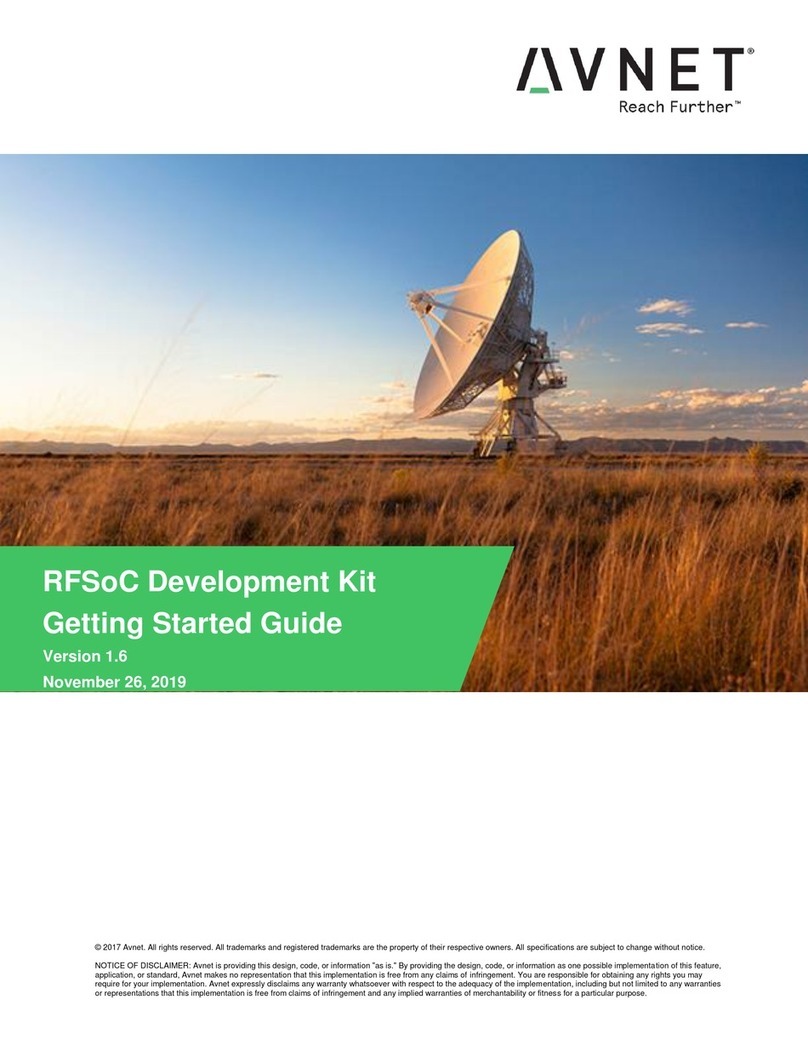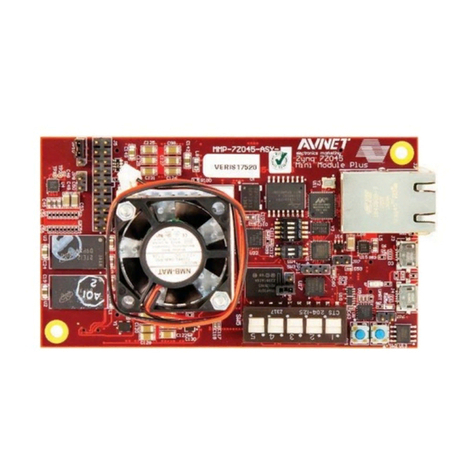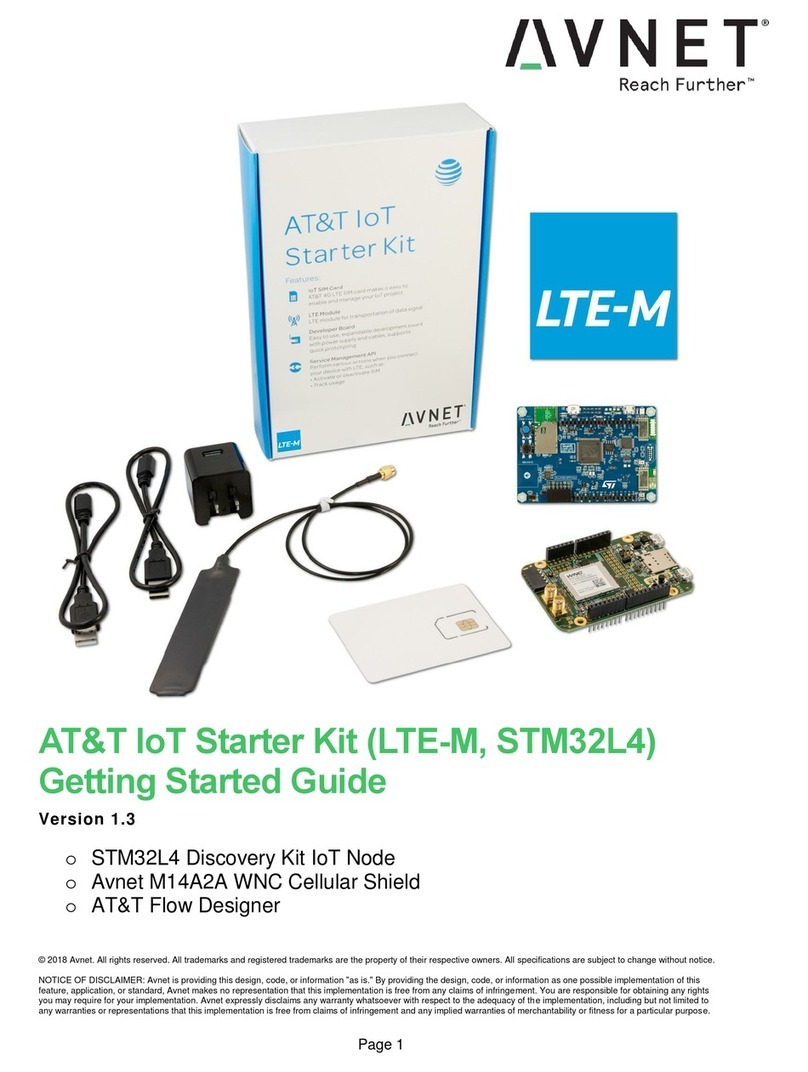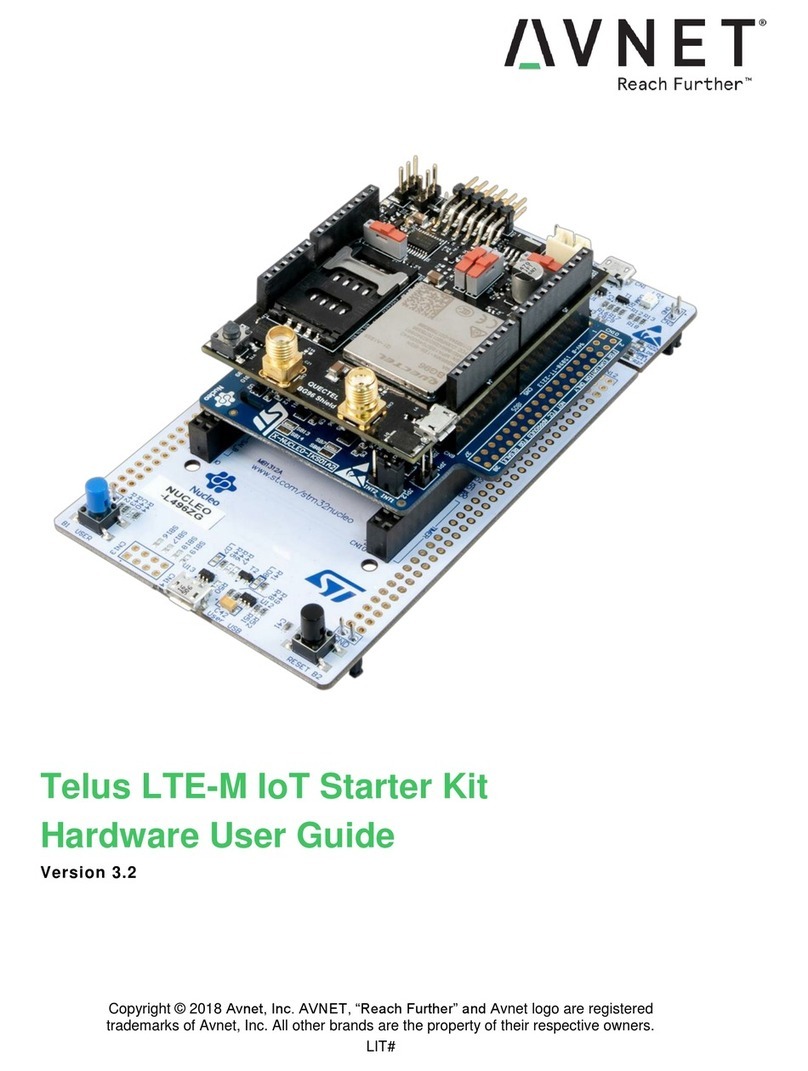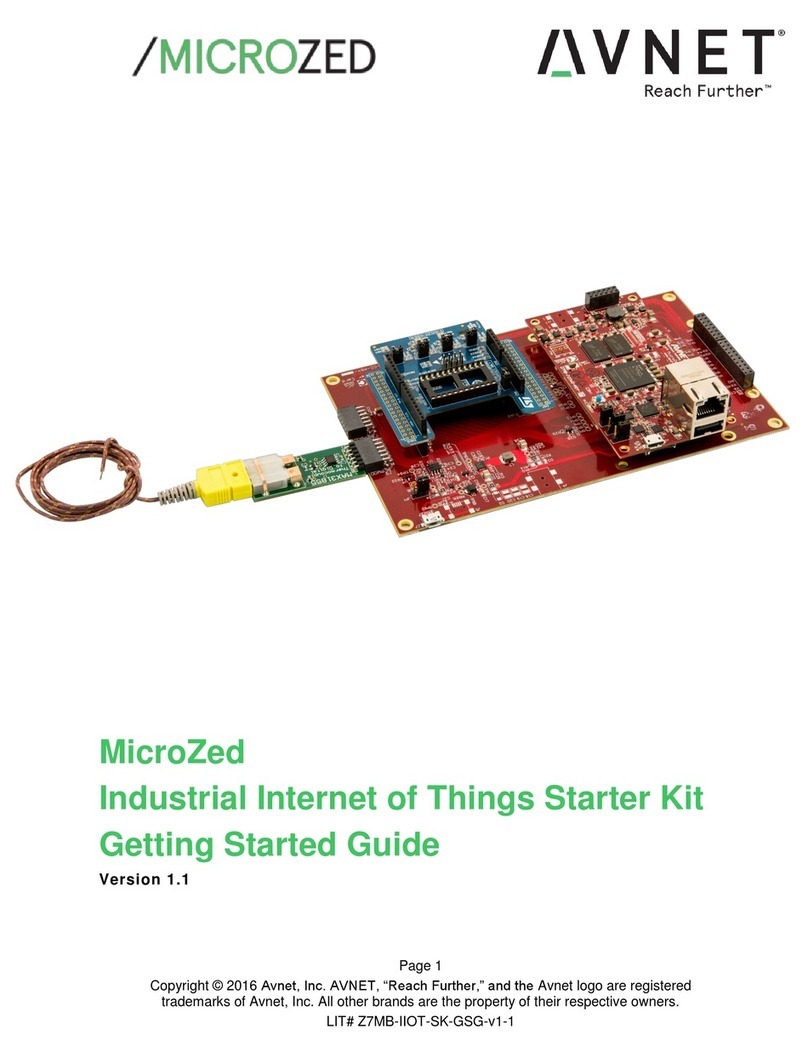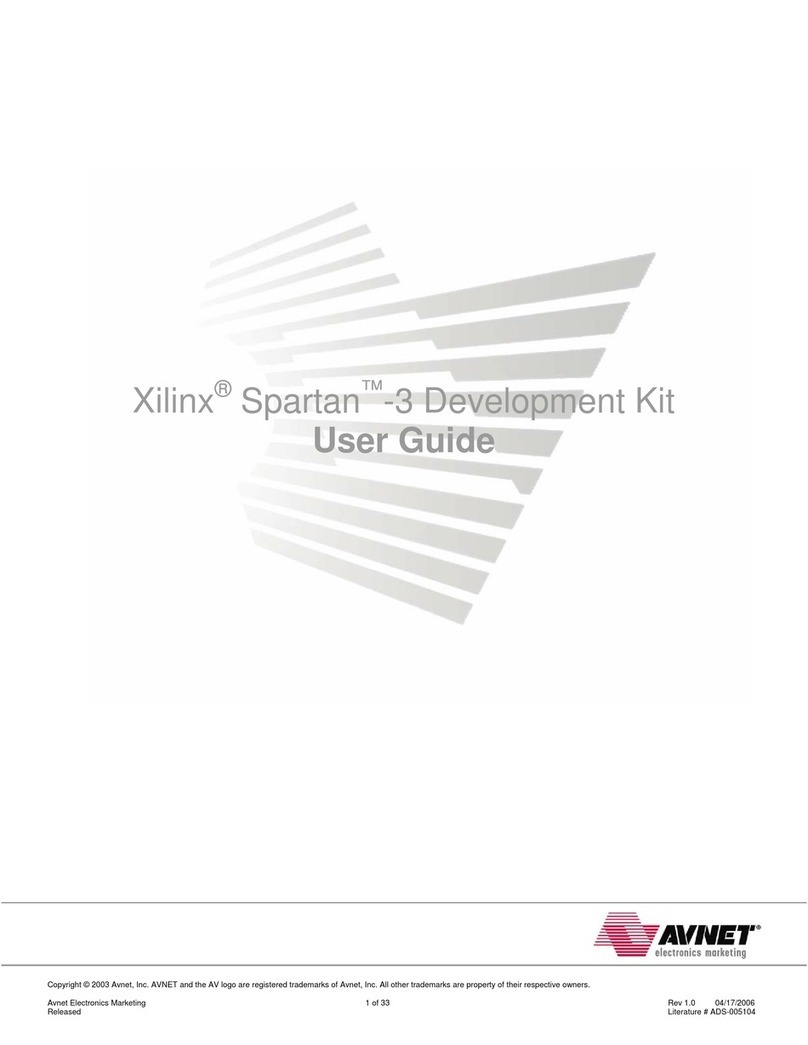
Copyright © 2003 Avnet, Inc. AVNET and the AV logo are registered trademarks of Avnet, Inc. All other trademarks are property of their respective owners.
Avnet Design Services 2 of 25 Rev 1.0 06/08/2004
Released Literature # ADS-xxxx04
Table of Contents
Xilinx Virtex-II Development Kit.................................................................................................................................................................1
Table of Contents.............................................................................................................................................................................................2
Figures ................................................................................................................................................................................................................3
Tables..................................................................................................................................................................................................................3
1.0 Introduction.....................................................................................................................................................................................4
1.1 Description..................................................................................................................................................................................4
1.2 Features:.......................................................................................................................................................................................4
1.3 Demo Applications:...................................................................................................................................................................4
1.4 Ordering Information: ..............................................................................................................................................................5
2.0 User Information............................................................................................................................................................................5
2.1 Power...........................................................................................................................................................................................5
2.2 Configuration..............................................................................................................................................................................5
2.2.1 Boundary scan Configuration..............................................................................................................................................6
2.2.2 System ACE MPM Configuration......................................................................................................................................6
2.2.3 SelectMAP and Custom Configuration Methods.............................................................................................................6
2.2.4 Configuration Modes............................................................................................................................................................7
2.2.5 JTAG Chain...........................................................................................................................................................................8
2.3 Jumper Settings...........................................................................................................................................................................9
3.0 Hardware........................................................................................................................................................................................11
3.1 Virtex-II FPGA........................................................................................................................................................................12
3.1.1 LVDS.....................................................................................................................................................................................12
3.2 Memory......................................................................................................................................................................................12
3.2.1 DDR SDRAM .....................................................................................................................................................................12
3.2.2 Flash.......................................................................................................................................................................................12
3.3 Communication........................................................................................................................................................................12
3.3.1 RS232 Transceiver...............................................................................................................................................................12
3.4 LED ...........................................................................................................................................................................................13
3.5 Dip Switches.............................................................................................................................................................................13
3.6 Connectors................................................................................................................................................................................13
3.6.1 General I/O Interface........................................................................................................................................................14
3.6.1.1 LVDS ...........................................................................................................................................................................16
3.6.2 Memory Expansion Connector Interface........................................................................................................................17
3.6.3 Auxiliary Connectors(Available only with FF1152 package) .......................................................................................19
3.6.4 Miscellaneous Connectors .................................................................................................................................................20
3.7 PCI/PCIX.................................................................................................................................................................................21
3.8 Evaluation Boards....................................................................................................................................................................23
3.9 Extender Card Board ..............................................................................................................................................................23
3.10 Power.........................................................................................................................................................................................23
3.10.1 FPGA I/O Voltage (Vcco)...........................................................................................................................................23
3.10.2 FPGA Reference Voltage (Vref)..................................................................................................................................23
3.11 Configuration Modes...............................................................................................................................................................23
4.0 Test Designs..................................................................................................................................................................................24
4.1 On-board Flash Test...............................................................................................................................................................25
4.2 PCI/PCI-X Test.......................................................................................................................................................................25
4.3 Switch/LED Test ....................................................................................................................................................................25
4.4 Avbus Connector Test............................................................................................................................................................25
4.5 DDR SDRAM Test.................................................................................................................................................................25
5.0 Example VHDL Project..............................................................................................................................................................25





